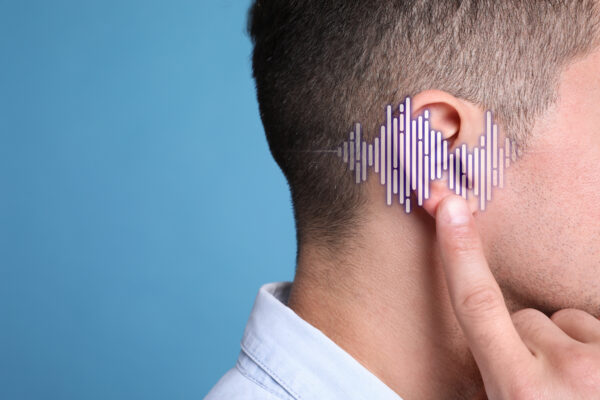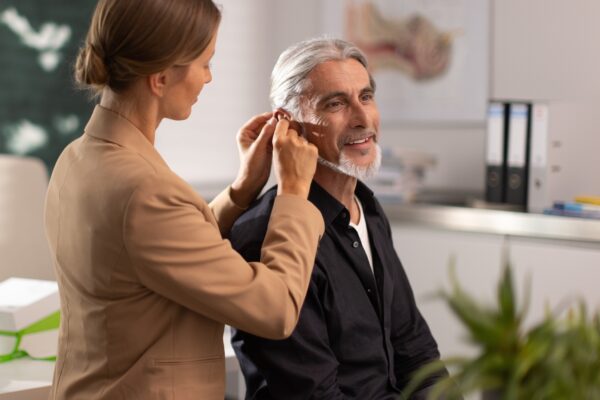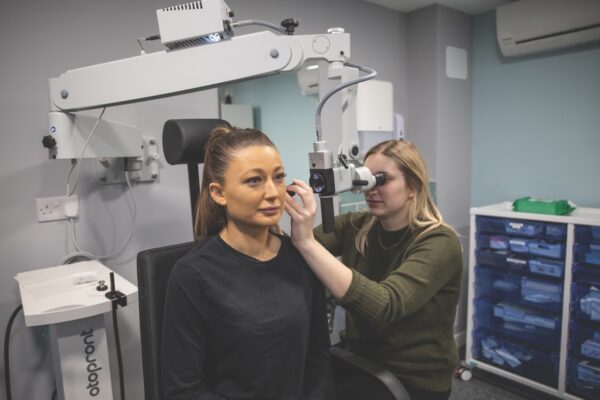
Hearing aids are essential tools that enhance the quality of life for individuals with hearing loss. Despite their benefits, many people prefer to keep them discreet, whether for personal privacy or aesthetic reasons. Concealing hearing aids effectively doesn’t mean compromising on comfort or functionality. In this blog, we’ll explore practical and stylish ways to make your hearing aid as discreet as possible, so you can feel confident and empowered every day.
Hiding a hearing aid is often a personal decision influenced by several factors.
For some, the social stigma surrounding hearing loss can create a sense of self-consciousness, even though hearing aids have become far more discreet over the years. Concealing a device can help alleviate concerns about how others perceive them. Privacy is another common reason; many prefer to keep their hearing loss undisclosed, especially in professional or formal settings.
Additionally, feeling self-assured in social interactions plays a significant role. Discreetly wearing a hearing aid allows users to focus on communication without worrying about their device drawing attention. Hiding a hearing aid isn’t about denial—it’s about creating a sense of control and confidence.
Choosing the right hearing aid is the foundation of keeping it discreet. Today’s advanced options include in-the-ear (ITE) devices that sit snugly inside the ear, completely-in-canal (CIC) designs that are nearly invisible, and invisible-in-canal (IIC) models that offer unparalleled discretion.
ITE models are popular for their balance between functionality and subtlety. CIC and IIC models are ideal for those prioritising invisibility, but they may not suit individuals with significant hearing loss. Behind-the-ear (BTE) models, though slightly more visible, remain a favourite for their powerful performance and compatibility with glasses.
The choice of hearing aid depends on factors such as the severity of your hearing loss, your lifestyle, and your comfort preferences. Consulting with an audiologist is crucial to finding a solution that balances functionality and appearance. These professionals can provide tailored recommendations based on your unique hearing requirements and personal preferences.
Hairstyles can be an effective way to naturally conceal hearing aids. For women, short layered cuts or soft waves that frame the face can work beautifully to cover behind-the-ear devices. Longer hair worn down or in relaxed updos also provides natural coverage.
Experimenting with hairstyles tailored to your face shape can also help. Adding volume around the ears can subtly conceal devices, while accessories like headbands or hair clips can divert attention. Men can benefit from hairstyles like tapered cuts or slightly longer hair around the ears, which help blend hearing aids seamlessly into the overall look.
Additionally, professional stylists can offer advice tailored to your specific needs, ensuring that your chosen style complements both your hearing aid and your personal preferences.
Beyond simply covering the ears, the right hairstyle can also enhance your natural features. For example, individuals with round faces might opt for styles that add height, while those with square faces can soften their look with layers. Choosing a hairstyle that compliments your face shape not only boosts confidence but can also make any hearing aid less noticeable.
For older individuals or those who wear glasses, shorter, layered hairstyles can be both practical and stylish. These options provide a polished appearance while offering excellent coverage for behind-the-ear devices.
For those who prefer not to hide their hearing aids, customisation offers a creative alternative. Personalising your device with colourful covers or subtle designs can transform it into a unique accessory. Some even choose decorative options like jewellery-inspired attachments, which celebrate the device rather than concealing it. This approach highlights individuality and creates an opportunity to normalise hearing aid use.
Hearing aid manufacturers now offer a range of stylish options, from sleek, modern finishes to vibrant colours that match your personality. Embracing these decorative features can make wearing a hearing aid feel less clinical and more expressive, allowing users to showcase their personality while benefiting from improved hearing.
If you wear glasses, finding a comfortable and discreet hearing aid can be a concern. Modern hearing aids are designed with compatibility in mind, ensuring that they sit securely behind the ear without interfering with glasses frames. Selecting slim, lightweight designs can enhance comfort and minimise visibility.
In addition, adjusting your glasses to fit more snugly behind your ears can prevent them from clashing with your hearing aids. Specialised tips and fittings for glasses are also available to make wearing both devices more comfortable and seamless. Working with an audiologist can help you find the ideal combination of glasses and hearing aids for maximum comfort and discretion.
Finding the right hearing aid is a highly individual process. Invisible models like CIC and IIC devices are ideal for those prioritising discretion, but they may not be suitable for severe hearing loss. Alternatively, behind-the-ear (BTE) models offer more powerful amplification while remaining discreet when paired with the right styling techniques.
The right hearing aid also depends on your lifestyle. Active individuals may prioritise durability and water resistance, while those in professional settings might value discreet designs. Comfort is another key factor; even the most hidden hearing aids need to feel natural for all-day wear.
Audiologists are invaluable resources in this process. They can guide you through selecting a device that meets both your hearing needs and your aesthetic preferences, ensuring that your choice enhances your quality of life.
Hiding a hearing aid doesn’t have to be a challenge. Whether you opt for an invisible design, experiment with hairstyles, or embrace personalisation, the right approach can make all the difference. It’s about feeling confident and comfortable, knowing your hearing aid is working seamlessly in the background.
By combining the latest technology with thoughtful styling techniques, you can achieve the perfect balance between functionality and discretion. At Sussex Audiology Centre, we’re here to guide you through every step of the process, from selecting the most hidden hearing aid to offering practical advice on wearing it confidently.
How can I hide hearing aid wires?
Hearing aid wires can be concealed by positioning them behind the ear or tucking them into the hairline. Opting for transparent or skin-toned wires can make them less visible.
Are there hearing aids specifically designed to be hidden?
Yes, models like ITE, CIC, and IIC hearing aids are designed for maximum discretion, sitting inside or deep within the ear canal.
What hairstyles work best to hide hearing aids for older adults?
Short styles with layers or slight volume around the ears are excellent for older adults, providing both comfort and coverage.
Can hearing aids and glasses work together?
Absolutely. Many modern hearing aids are designed to sit comfortably alongside glasses. Slim designs and professional fittings ensure they don’t interfere with each other.
Should I decorate my hearing aid instead of hiding it?
Decorating your hearing aid can be a fun way to personalise it and shift the focus from concealing to celebrating your individuality.
What’s the best hidden hearing aid for me?
The best hearing aid depends on your level of hearing loss, lifestyle, and preferences for discretion. Consult an audiologist to explore your options.
You can contact our team by giving us a call at any of our locations here. You can also book online using our online service which you can access at the top of the webpage.

21 March 2024

21 November 2025

25 November 2025
Fields marked with an * are required
“I’d like to start by thanking Rosanne for her expertise and service over the
years – the best hearing aids in the world are nothing without an expert
audiologist on hand to manage them.
December ‘24, I decided to upgrade my aids to Phonak Audéo I90-Sphere,
and the experience has been both amazing and quite emotional.
I am now able hear speech far more clearly, even in very noisy situations, as
never before – the “Spheric” program is unbelievably good. Birdsong is a joy,
and I can enjoy my music again but crucially, I am far more enthusiastic
about attending social occasions, family gatherings, meetings, the cinema
etc.
I’ve had them six months now and I’m still absolutely delighted. Many
thanks to Rosanne and Sussex Audiology Centre.”
Roy Groom
Patient Review
“I was nervous about getting a hearing test, but the audiologists made me feel at ease. The results were explained clearly, and I felt well cared for.”
David L, Crawley
Google Review
“The team at Sussex Audiology Centre was incredibly professional and friendly. My at-home hearing test was convenient and thorough. Highly recommended!”
Sarah M, Crawley
Google Review
“Lovely and friendly. Helped me amazingly remove my wax buildup comfortably. And offered to clean my other ear free of charge as it was only ever so slightly blocked. Highly recommend visiting here for your ear troubles.”
Scott Pullen
Google Review
© 2025 Sussex Audiology | Privacy Policy | Late Fees
Up front payment is required at the time of booking, card payment can be taken via telephone.
If wax has not been sufficiently softened prior to the appointment the consultation fee remains payable. This will be confirmed via video otoscopy.
Appointments will not be made within 7 days to allow sufficient time for ear drops to take effect and maximise the efficacy of the appointment. Olive oil ear drops (Earol) should be applied morning and evening for the 7 days prior to the appointment unless a valid reason why this is not possible (ie. Perforated ear drum).
If the appointment is cancelled within 24 hours of the visit a £90 fee will be charged.
If the patient is not present or not able to be seen a £90 appointment fee will be charged.
Appointments will be within a 2 hour window, the audiologist will call on route to confirm arrival 30 mins prior.
Patient must be ready for their appointment, sitting upright in a chair with access to both ears. Patients in care homes must be able to sit in a non-high winged chair (normal high backed chair is suitable).
You will be required to read and sign (if able) a treatment consent form at the time of your appointment.
If you would like any information regarding our services or products please get in touch.